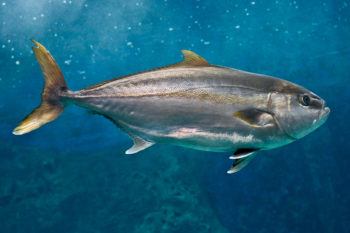Research On Greater Amberjack To Be One Of Largest Fish Studies Of Its Kind

Two Texas A&M University at Galveston marine biologists will be part of a national team of researchers in one of the largest fish studies ever conducted in the Gulf of Mexico.
Marine biologists Jay Rooker and David Wells will join the team of 18 scientists from 11 other universities to determine the status of the Greater Amberjack, one of the most commonly found fishes in southern waters. The $9 million study will encompass large portions of the Gulf and parts of the South Atlantic Ocean.
One of the team’s main goals is to determine if numbers of the Greater Amberjack are declining, and if so, by how much. It is one of the most sought-after fishes by commercial and sport fishermen, so much so that it might be in danger of overfishing and population decline.
In upcoming months, the team will use underwater video, hydroacoustics, tagging, genetic markers, modeling and other methods to determine habitat-specific abundances of the Greater Amberjack, Rooker said.
“The scale, complexity, and funding of this research endeavor is well beyond any previous study on Greater Amberjack,” he said. “Through this investigation, we will determine how to best apply advanced technologies to improve population estimates of Greater Amberjack and other reef fish populations.”
Rooker added that there is considerable debate in the fishing community regarding the numbers of the species — anglers believe the population remains steady, while resource managers fear that overfishing of the Greater Amberjack could be a problem in the years to come.
“Consequently, the management of Greater Amberjack is highly contentious, with the fishing community believing that numbers are undercounted,” he said.
This results in reduced catch quotas and a shortened fishing season, Rooker noted, which are restrictions that don’t please fishermen.
Rooker said that he and Wells will develop habitat-specific abundance estimates for Greater Amberjack in the western Gulf of Mexico using underwater video and echo sounder surveys. They will also oversee acoustic tagging efforts on the fish to determine its habitat use, home range and movement.
The study is funded by National Sea Grant College Program and the National Marine Fisheries Service.
Media contact: Rebecca Watts, rwatts@tamug.edu





